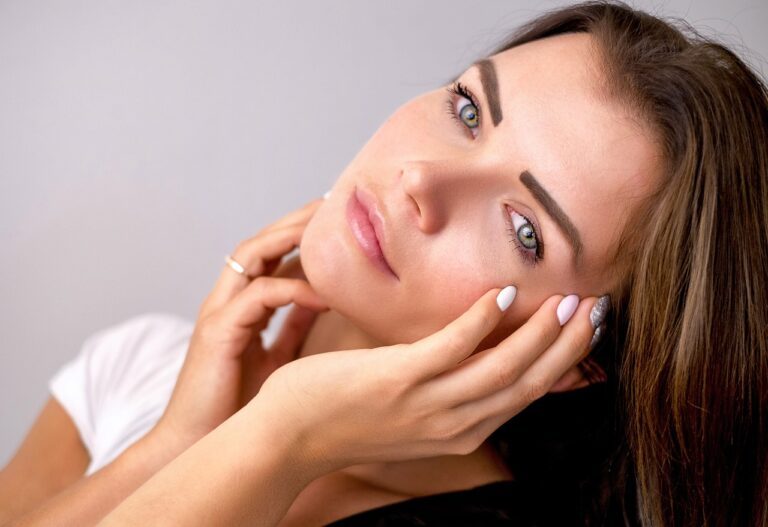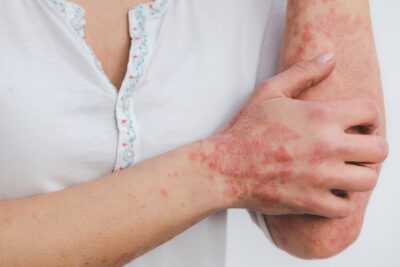November 5, 2024
Dark spots, also known as hyperpigmentation, are a common skin problem affecting people of all ages and skin types. They can appear on the face, hands, shoulders, and other areas frequently exposed to the sun. Although they are usually harmless, they can be bothersome and affect self-confidence.
In this article, we’ll explore various ways to lighten dark spots. Whether you prefer natural home remedies, over-the-counter products, or professional treatments, effective options are available for everyone. By following these tips and making some lifestyle changes, you can reduce the appearance of dark spots and enhance your skin’s overall health. Let’s dive into the steps that can help you achieve clearer, more beautiful skin.
Understanding Dark Spots and Their Causes
Dark spots, or hyperpigmentation, occur when patches of skin become darker than the surrounding area. This happens because those areas produce more melanin, the pigment responsible for skin colour. There are several reasons why your skin might produce extra melanin.
Sun Exposure:
– One of the leading causes of dark spots is sun exposure. Ultraviolet (UV) rays from the sun cause the skin to produce more melanin to protect itself. Over time, this can lead to the formation of dark spots, especially on areas like the face and hands that get the most sun.
Hormonal Changes:
– Hormonal changes, such as those experienced during pregnancy or when taking birth control pills, can also cause dark spots. This type of hyperpigmentation is called melasma. It often appears on the face and can be pretty stubborn.
Aging:
– As you age, your skin’s ability to recover from sun damage decreases. This can lead to the formation of age spots, also known as liver spots. These are common in older adults and typically appear in areas frequently exposed to the sun.
Inflammation:
– Any skin inflammation, including acne, eczema, or injury, can increase melanin production. This condition is called post-inflammatory hyperpigmentation. It usually affects people with darker skin tones more severely.
Effective Home Remedies to Lighten Dark Spots
If you’re looking for natural ways to lighten dark spots, several home remedies can help. These remedies use common household ingredients that are gentle on your skin.
Lemon Juice:
– Lemon juice is rich in vitamin C, which has skin-lightening properties. Using a cotton ball, apply fresh lemon juice to dark spots. Leave it on for 10-15 minutes, then rinse it with lukewarm water. Be sure to moisturize afterwards, as lemon juice can dry out your skin.
Aloe Vera:
– Aloe vera is known for its soothing and healing properties. It can help fade dark spots and reduce skin pigmentation. Apply pure aloe vera gel directly to the affected areas before bedtime and leave it on overnight. Rinse it off in the morning with water.
Apple Cider Vinegar:
– Apple cider vinegar contains acetic acid, which can help lighten pigmentation. Mix apple cider vinegar and water in equal parts, and apply this solution to the dark spots with a cotton ball. Leave it on for a few minutes before rinsing off with water.
Turmeric:
– Turmeric has antioxidant and anti-inflammatory properties that can help brighten your skin. Mix a teaspoon of turmeric powder with honey or milk to make a paste. Apply it to your dark spots and leave it on for 15-20 minutes before rinsing off.
Potato Juice:
– Potatoes contain natural bleaching agents that can help lighten dark spots. Grate a potato and squeeze out the juice. Apply the juice to the affected areas with a cotton ball and leave it on for 15-20 minutes before rinsing off.
Using these home remedies consistently can help reduce the appearance of dark spots over time. Always do a patch test first to ensure you do not have an allergic reaction to any ingredients.
Over-the-Counter Products for Dark Spot Reduction
Several over-the-counter options can help reduce dark spots for those who prefer ready-to-use products. These products often contain active ingredients that fade pigmentation and even skin tone.
Hydroquinone:
– Hydroquinone is a powerful skin-lightening agent that reduces melanin production. Look for products with a concentration of up to 2% for safe over-the-counter use. Apply hydroquinone cream directly to dark spots, following the instructions on the label.
Retinoids:
– Retinoids, derived from vitamin A, help speed up cell turnover and fade dark spots. Retinol is a common ingredient in many anti-aging products and can also be effective for hyperpigmentation. Start with a low concentration to avoid skin irritation and apply it at night since retinoids can make your skin more sensitive to the sun.
Vitamin C Serums:
– Vitamin C is a potent antioxidant that can brighten skin and reduce dark spots. Look for serums with a stable form of vitamin C, such as ascorbic acid, and apply it daily under your sunscreen to help protect and repair your skin.
Chemical Exfoliants:
– Products containing alpha hydroxy acids (AHAs), like glycolic or lactic acid, can help exfoliate the top layer of skin, promoting the removal of dark spots. Use these exfoliants a few times a week to see improvements over time.
Niacinamide:
– Niacinamide, vitamin B3, can help lighten dark spots and improve skin tone. It’s suitable for all skin types and can be used with other active ingredients for better results.
Consistency and patience are essential when using over-the-counter products, as it can take several weeks to see noticeable improvements.
Professional Treatments for Persistent Dark Spots
Professional treatments may be necessary if dark spots are stubborn and don’t respond well to home remedies or over-the-counter products. Dermatologists offer various advanced procedures to treat hyperpigmentation effectively.
Chemical Peels:
– Chemical peels involve applying a solution to the skin that causes the top layers to peel off, revealing fresher, lighter skin beneath. Different types of chemical peels can be used depending on the severity of the dark spots.
Laser Therapy:
– Laser treatments use focused light energy to target and break down dark spots. The laser stimulates collagen production, leading to clearer and smoother skin. Multiple sessions may be required for optimal results.
Microdermabrasion:
– Microdermabrasion is a mechanical exfoliation treatment that removes the outermost layer of dead skin cells. This helps reduce the appearance of dark spots and promotes cell regeneration.
Cryotherapy:
– Cryotherapy freezes dark spots with liquid nitrogen, causing the targeted skin cells to die and eventually slough off. It’s a quick procedure but may require multiple sessions.
Prescription Creams:
– A dermatologist may prescribe stronger bleaching creams that contain higher concentrations of active ingredients like hydroquinone, retinoids, or corticosteroids. These medications are more potent than over-the-counter options and should be used under medical supervision.
Consulting a dermatologist for personalized treatment recommendations ensures you receive the most effective and safe treatments for your skin type.
Conclusion
Dark spots can be a frustrating skin issue, but with the right approach, you can effectively lighten them and achieve a more even skin tone. Understanding the causes of dark spots is the first step in prevention and treatment. Whether you choose home remedies, over-the-counter products, or professional treatments, consistency and patience are crucial for seeing results.
At VIDA Dermatology, our team of experienced dermatologists is dedicated to helping you achieve healthy, beautiful skin. If you’re ready to take the next step in treating dark spots, book a consultation with our dermatology clinic in Edmonton today to explore your options and find the best treatment plan. Your journey to brighter, more even skin starts here.



